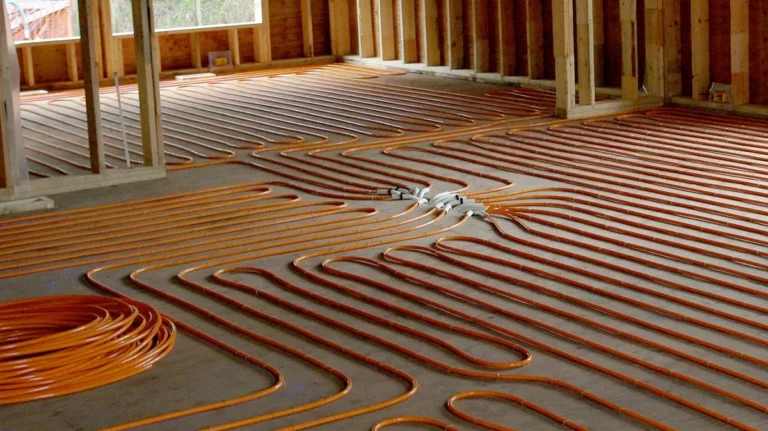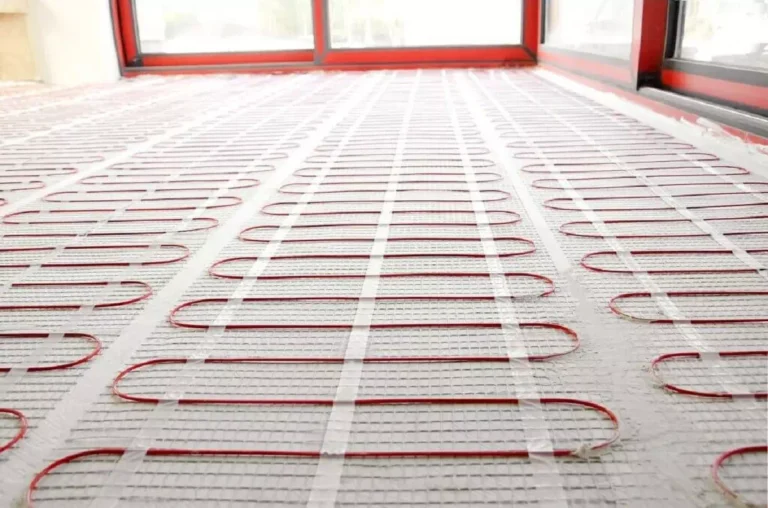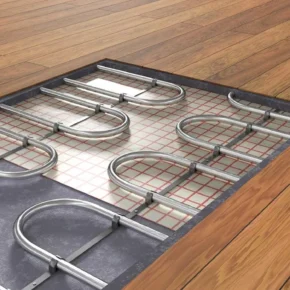The underfloor heating system creates comfort in any room, allowing heat to be evenly distributed. Regardless of the type (water or electric), proper installation is the key to the efficiency and longevity of the system.
1. Choosing the type of underfloor heating
Before starting work, it is important to determine which system is best for your home:
- Water heated floor :
Suitable for private houses or premises with autonomous heating. It is effective and economical, but requires more complicated installation.

- Electric heated floor :
Ideal for apartments and small spaces. Easier to install, but consumes more electricity.

2. Preparation of the base
- Leveling the surface :
The base must be clean, dry and level. If there are irregularities, they should be eliminated with a screed. - Waterproofing :
To prevent moisture from entering the underfloor heating system, a layer of waterproofing must be laid. - Thermal insulation :
This prevents heat loss downwards. Use heat-insulating plates or foam with a thickness of 2-5 cm.
3. Installation of the underfloor heating system

For the water system :
- Lay a metal grid for fixing the pipes.
- According to the scheme, distribute the pipes in steps of 10-30 cm, fixing them with plastic clamps.
- Connect the pipes to the manifold, check the system for leaks by performing a pressure test.
For the electrical system :
- Unroll the heating mats or lay the cables according to the manufacturer’s instructions.
- Install the thermostat and connect the system to the network.
- Carry out a test to check the uniformity of heating.
4. Pouring screed

- After installing the system, a 3-5 cm thick cement-sand screed is laid on top. This provides an even surface for the finish coat.
- Self-leveling mixtures can be used for electric underfloor heating.
5. Laying the floor covering

The warm floor is compatible with many materials, such as:
- Ceramic tile
- Laminate
- Vinyl
- Parquet board
Choose a coating that conducts heat well and is marked as compatible with underfloor heating systems.
Useful tips
- Design : Before installation, be sure to create a layout plan for the system, avoiding areas under furniture and large appliances.
- Testing : Carry out test runs at all stages to ensure the system is working.
- Energy saving : Use programmable thermostats to save electricity or make optimal use of heat.
A properly installed warm floor will provide you with comfort and coziness in your home for many years. Follow the recommendations and your system will work flawlessly!














